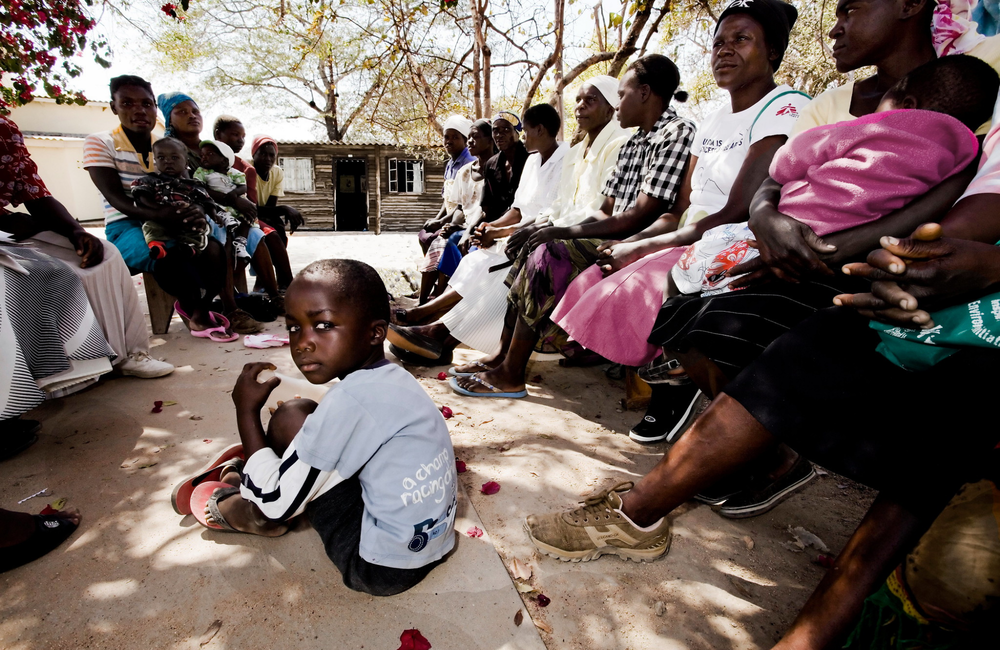
Antiretroviral treatment coverage in children continues to lag behind adult treatment coverage despite the implementation of ‘treat all’ guidelines, an analysis of 91 countries published in the journal Pediatrics shows.
Declines in AIDS deaths in children slowed after ‘treat all’ guidelines came into effect, especially in the Asia-Pacific region, the study found.
In 2015, the World Health Organization issued global guidelines recommending treatment for all people with HIV as soon as possible after diagnosis. This ‘treat all’ approach applies to adults and children. It has led to substantial increases in the proportion of people with HIV on treatment (coverage) and reductions in HIV-related deaths (mortality).
Although there is strong evidence that ‘treat all’ policies lead to improvements in adult treatment coverage and reductions in adult HIV-related deaths, evidence is lacking regarding the impact of the policy change on children with HIV.
Researchers at Johns Hopkins Bloomberg School of Public Health and the United States Agency for International Development used data from the Global AIDS Response Progress Reports submitted to UNAIDS and modelling of national and regional HIV prevalence to assess treatment coverage and HIV-related mortality in adults and children between 2010 and 2020.
The analysis measured changes after ‘treat all’ recommendations were incorporated into national guidelines for 91 lower- and middle-income countries that had complete data on paediatric HIV coverage and AIDS mortality. The analysis included 19 countries in East and Southern Africa and 23 in West and Central Africa and so captured most countries with a high burden of HIV.
Between 2010 and 2020, adult antiretroviral coverage increased from 26% to 74%. In comparison, paediatric coverage increased from 16% to 54%. The greatest increases in paediatric coverage occurred in the Asia-Pacific region (from 23% to 81%) and in Eastern and Southern Africa (18% to 57%).
AIDS-related deaths in children fell by more than half, from 240,000 to 99,000, with the greatest reductions taking place in Eastern and Southern Africa (reduced from 150,000 to 47,000) and in West and Central Africa (69,000 to 39,000).
By 2018, 89% of countries had adopted ‘treat all’ guidelines. Comparing the rate of increase in paediatric antiretroviral treatment coverage before and after implementation of ‘treat all’ guidelines, the researchers found that the rate of increase fell by 6% after the ‘treat all’ guidance was adopted. But when analysed by region, this slowing in the pace of treatment expansion in children was only statistically significant in Eastern and Southern Africa and in West and Central Africa.
The study also found that following the adoption of ‘treat all’ guidance, the rate of decline in AIDS mortality in children slowed by 8%, with an especially sharp slow down in the Asia-Pacific region (the rate of decline slowed by 26%) and Southern and Eastern Africa (rate of decline slowed by 10%).
The study authors highlight several challenges that need to be addressed to close the gap in treatment coverage and AIDS mortality between adults and children:
- In mixed epidemics, service models predominantly geared to the needs of key populations may require modifications to reach pregnant women and improve rates of infant HIV diagnosis.
- Prevention of vertical transmission is critical for reducing AIDS deaths in children. Substantial variations in testing and treatment coverage during pregnancy persist. Elimination of vertical transmission by intensified HIV testing and treatment in pregnant women needs to be prioritised in west and central Africa.
- Rates of infant HIV diagnosis remain suboptimal. Family-based models of testing and treatment could improve rates of infant diagnosis and retention in care and prevent late HIV diagnosis in children.
The Global Alliance to End AIDS in Children, launched in 2022, aims to end AIDS in children by 2030, also highlights the importance of preventing HIV transmission to pregnant and breastfeeding adolescents and women. The Global Alliance also draws attention to the need for legal and structural reforms that protect access to services, reduce stigma and discrimination and promote gender equality and the meaningful involvement of people with HIV in decision making.
Rosen JG et al. Pediatric antiretroviral therapy coverage and AIDS deaths in the “treat all” era. Pediatrics, 151 (6): e2022059013.
DOI: https://doi.org/10.1542/peds.2022-059013
Full image credit: Psychosocial support group in Zimbabwe (part of a prevention of mother-to-child transmission programme). Image by Elizabeth Glaser Pediatric AIDS Foundation/DFID - UK Department for International Development. Available at www.flickr.com/photos/dfid/5181910358/ under Creative Commons licence CC BY-NC-ND 2.0.
